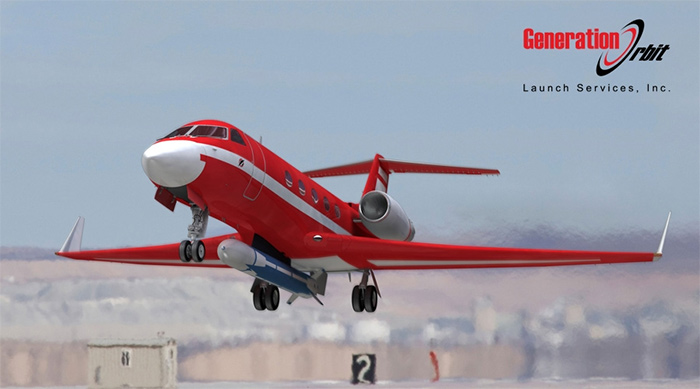
Boeing has won the contract competition to build DARPA’s Airborne Launch Assist Space Access (ALASA) launch system.
The goal of the ALASA program is to launch small (100-pound) satellites for $1 million or less, including range support costs. As an air-launched system, ALASA could deploy to any part of the world for launches to any azimuth.
In 2012, DARPA awarded ALASA design-study contracts to Boeing, Lockheed Martin, and Virgin Galactic. The new contract has a base value of $30.6 million, with a first option of $72 million and second option of $2 million.
[Update] Boeing has revealed some details of its ALASA architecture. As expected, it is based on Boeing’s F-15 jet fighter.
According to Boeing, the ALASA rocket is 24 feet long. The F-15E Strike Eagle aircraft releases the rocket at approximately 40,000 feet.
Steve Johnston, Boeing director of Advanced Space Exploration, said “We developed a cost-effective design by moving the engines forward on the launch vehicle. With our design, the first and second stages are powered by the same engines, reducing weight and complexity.”
The contract options call for Boeing to build as many as 12 rockets.
An open question is what payloads ALASA will launch. ALASA was intended to be launcher for DARPA’s SeeMe (Space Enabled Effected for Military Engagements) recon satellites for military war fighters. Congress has eliminated funding for SeeMe, however. At the moment, ALASA appears to be a research and development exercise. DARPA has stated that any operational system would be transitioned to a user such as the Air Force, the Navy, or a commercial customer.
NASA is helping to fund the development of a similar airborne launch system through its NASA Enabling eXploration and Technology (NEXT) program. The GO Launcher, based on a Gulfstream G-III business jet, is being developed by Generation Orbit, a spinoff of Spaceworks Engineering. Like ALASA, GO Launcher is designed to orbit payloads up to 100 pounds.
Satellites in the sub-100-pound class are usually launched as secondary payloads with larger satellites. This launch mode hinders scheduling and reduces flight opportunities. Many customers desire a dedicated small launcher, such as ALASA or GO Launcher, that can launch small payloads on demand. The demand for dedicated smallsat launches will likely increase with the growing number of constellations from companies such as Planet Labs and Skybox.


Leave a Reply